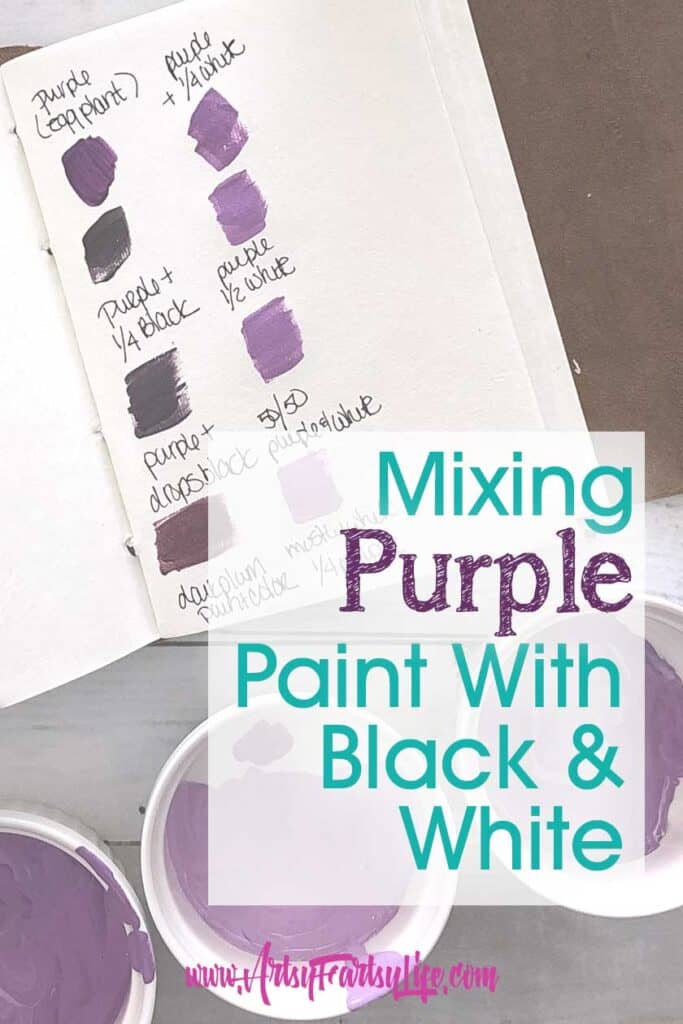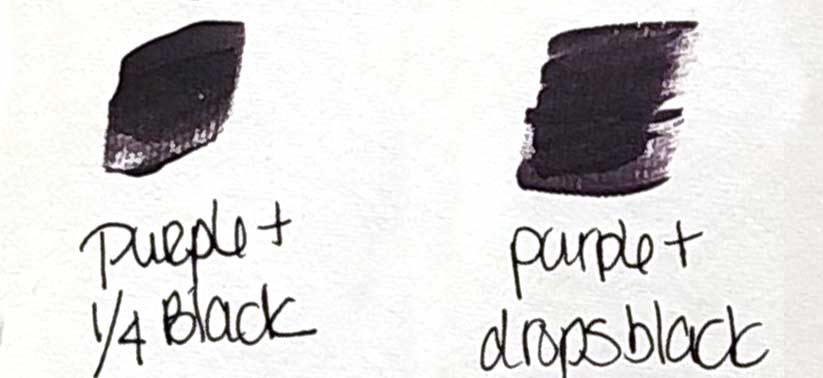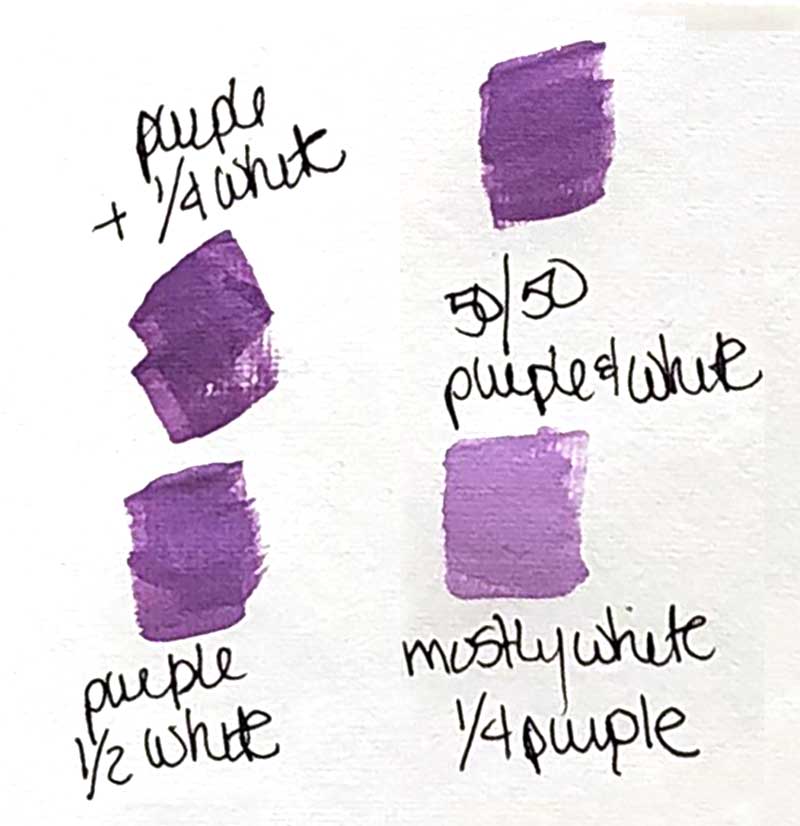Tips and ideas for how to mix purple acrylic paint with black and white to make shades and tints of purple. Great for adding dimension and depth to your backgrounds and journals!

Mixing Purple Paint
As a mixed media artist, I am often trying to find just the right color of paint to use as background color or to go with a magazine picture that I find!
After writing about how to mix purple paint, I got a lot of questions about what would happen if we mixed purple with black or purple with black. It seems many of us like to use purple paints in our artwork.
Related Post: How To Make Purple By Mixing Different Paint Colors
Mixing Purple Paint With Black

I have to say that I was super disappointed about mixing purple with black. I was thinking it would make a dark purple or deep purple color like plum, but no!
As soon as you added any black to the purple it got less vibrant and super dark, losing all the depth that purple usually has! And that was even just barely adding a couple of drops of black to bunch of purple paint.

As you know, adding black to purple makes it a shade, but it got so muddy and cloudy that it almost wound up looking like a tone (adding black AND white to the color).
If I am using purple I am wanting a pop of color, so this was not something I will be doing in the future!
Additional Resource :: Mixing Purple With All The Colors of the Rainbow
Mixing Purple Paint With White

I have to say that I was WAY more enthusiastic about mixing purple with white!
When I added white, it kept the vibrancy that we like about purple and just seemed more like light purple. It didn't become super pastel-y until you were mixing white with a little purple.
I would for sure feel comfortable about making lighter purple for a project, just by mixing some straight white in!
About This Test
Acrylic Paint Color Used: Eggplant
Types of Paint Used: Anita's All Purpose Acrylic Paint (I got a whole bunch of these cheap at Hobby Lobby!)
About Purple
True purple is a Secondary Color made up of half and half red and blue which are primary colors. Because I used a straight purple color, it did lighten down to lavender, but had I used a more red purple, we might have gotten more of a maroon or plum color when mixing them.
There are a million different colors of purple (think aubergine, maroon or plum) that you can make using various amounts of red, blue, even yellow or green!
Different Shades of Purple
In theory we could have gotten different shades of purple by adding varying amounts of black to purple, but the black just overwhelmed it altogether.
About Magenta
Magenta is the CYMYK version of purple ... it is more fuchsia colored than what I think of as purple. According to color theory, Magenta is the true secondary "purple" color.
I feel like I sounded super grumpy at purple and black. I was really disappointed that even adding a couple of drops of black made it so darn dark! And this is why I do the experiments... so that I know what works when I am going to be doing real artwork in my journals!




